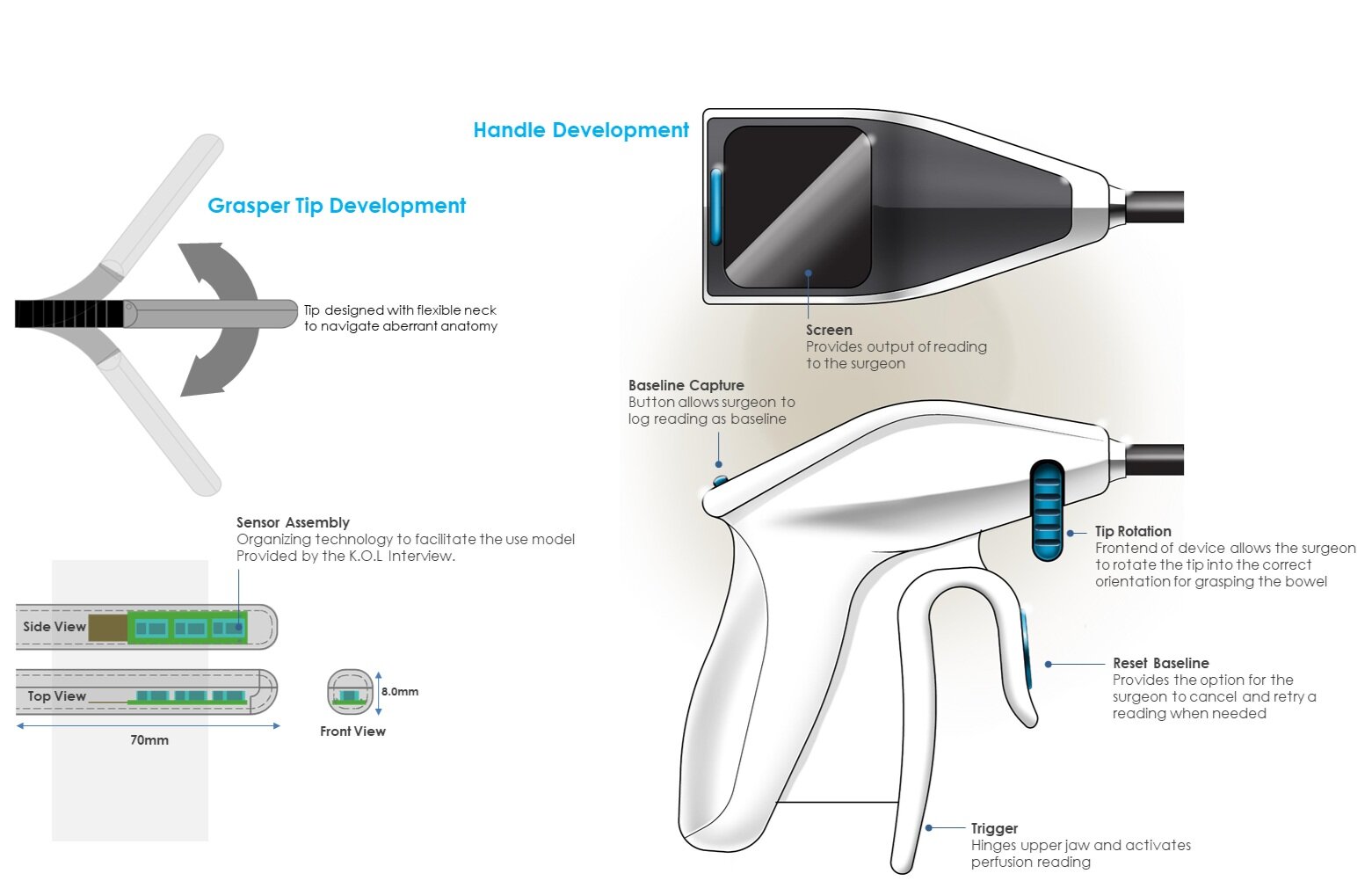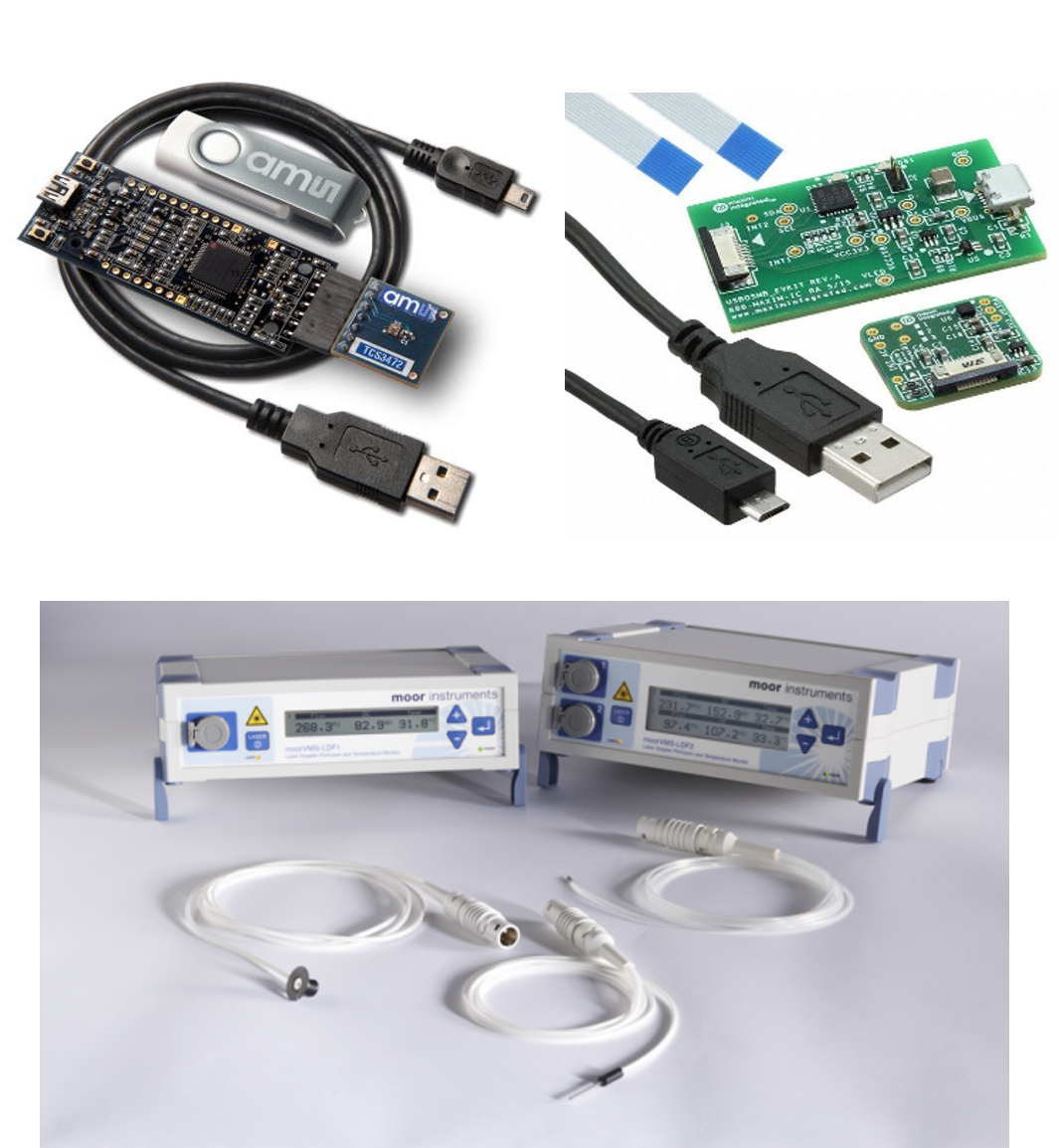
Perfusion is top of mind as a reason for anastomotic leaks for all surgeons. Analyzing the blood flow at the site of the Anastomosis is critical to reduced mortality rates post-surgery.
HUMANIZING TECHNOLOGY:
Grail Colorectal Tissue Perfusion Device
Human Centered Design Lead
The Grail Colorectal Tissue Perfusion Device is a looks like prototype combined with a benchtop model which demonstrates a concept for laparoscopic tool that can provide real time data of blood flow at an anastomosis (surgical connection of intestinal tissue)>
The device would allow surgeons to measure the presence of blood flow at the closure site and provide a simple readout to the surgeon to make an informed decision. Data could then be collected in order for surgeons to track outcomes and provide better care. The system is designed to provide information to the surgeon to make an informed decision as opposed to being an actual diagnostic tool, keeping the power where it needs to be.
The development was an opportunity for close interdisciplinary collaboration. Working together with Research + Development Engineers, Electrical Engineers, and Mechanical Engineers, this effort was a marrying of industrial design, user interface design, Engineering, Science, Biology, Physiology, and surgical workflow.
Technology.
Identifying the right combination of sensor technologies that facilitate the detection of key parameters that can provide real-time data to surgeons to make a decision about the level of perfusion at an anastomosis.
Tested.
Working with an inter-disciplinary team to develop fixtures, and test the sensors, in an animal lab. Understanding the variation and accuracy of the technology provides insight on the appropriate method of organizing the internal architecture to provide the surgeon with confidence in the information provided.
Adapted.
By evaluating the needs and standards for surgeons and their tools, the team was able to incorporate the technology in a way that is intuitive and familiar.
Stage I: Initial Concept Development

Early concept development understanding that the system needed to be hand held and used in a minimally invasive surgery

Out of several proposals, this embodiment was chosen based on familiar touchpoints and the embedded screen.

Baseline storyboard to facilitate a conversation with the project team, and users, to understand where development efforts would need to be focused
Stage II: Concept Refinement

Leveraging early concept development to gain insights for further refinement and down-selection (information redacted for confidentiality)

Probe Concept :: Surgeon would utilize the side of the probe to analyze the width of the bowel. Passive analysis allows surgeon to move quickly, but pressure may be inconsistent.

Probe Concept: Prototype created for further research and proof of concept


Grasper Concept: Prototype created for further research and proof of concept
This client was purchased by a Fortune 500 company. The project was well received and taken internally for continued development.


